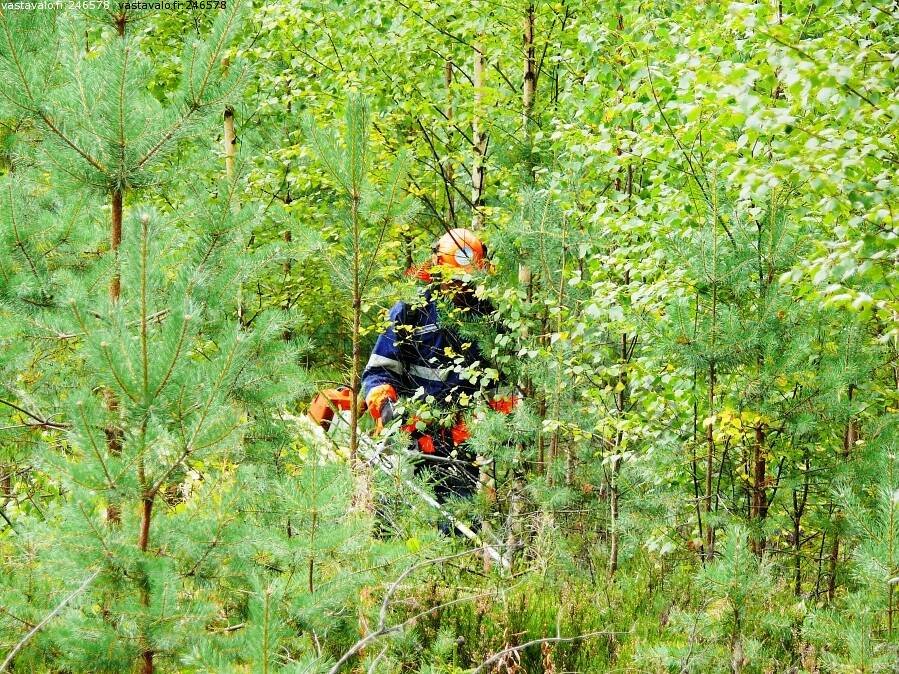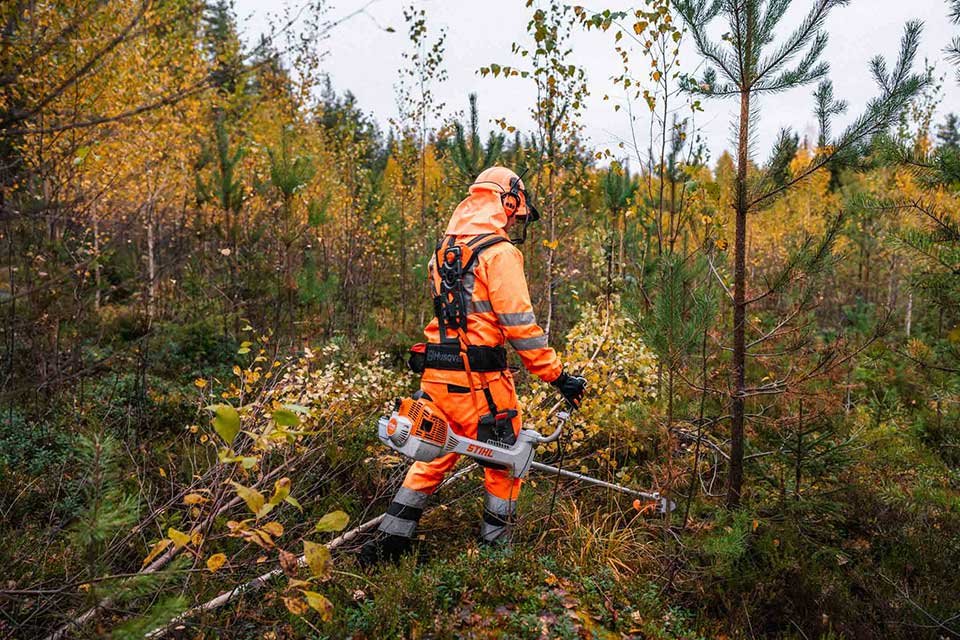
Young stand thinning is a work stage in which the density and species composition of the crop trees are adjusted to the target level. The aim of young stand thinning is that the trees to be harvested in the first commercial thinning will be large enough to be merchantable. As a rule, the work is done in advanced seedling stands.
Where young stand thinning is used
Young stand thinning is done in advanced seedling stands where there is a need to adjust the density and species composition. In advanced seedling stands, the average height of the crop trees is over 1.3 metres. The mean diameter at breast height of an advanced seedling stand is under 8 cm, or the dominant height is under 7 metres for pine and spruce and under 9 metres for birch.
Young stand thinning is carried out for the benefit of the highest-quality, best-growing trees, regardless of whether they are planted or naturally regenerated. Overtopped, heavily branched, crooked, weak or diseased trees are removed.
The need for young stand management depends on the characteristics of the site and on previous treatments such as the method of regeneration and whether early cleaning has been carried out.

Benefits of young stand thinning
- Effects on stand development
- The best trees gain growing space, which accelerates their growth
- Poor-quality trees are removed, improving overall quality
- A vigorous stand is obtained, more resistant to damage from snow, moose, insects and fungi
- Effects on profitability
- In a thinned stand, tree quality is better than in an unmanaged stand, producing more valuable timber in later harvests
- The first commercial thinning yields larger-sized timber, harvesting is cheaper and revenues are higher
- Later thinnings also generate more timber-sales income because larger, more valuable trees are obtained
- Faster diameter growth means final-felling timber sales revenues are brought forward
- Effects on stand resistance to damage
- A vigorous stand is more resistant to damage from snow, moose, insects and fungi.